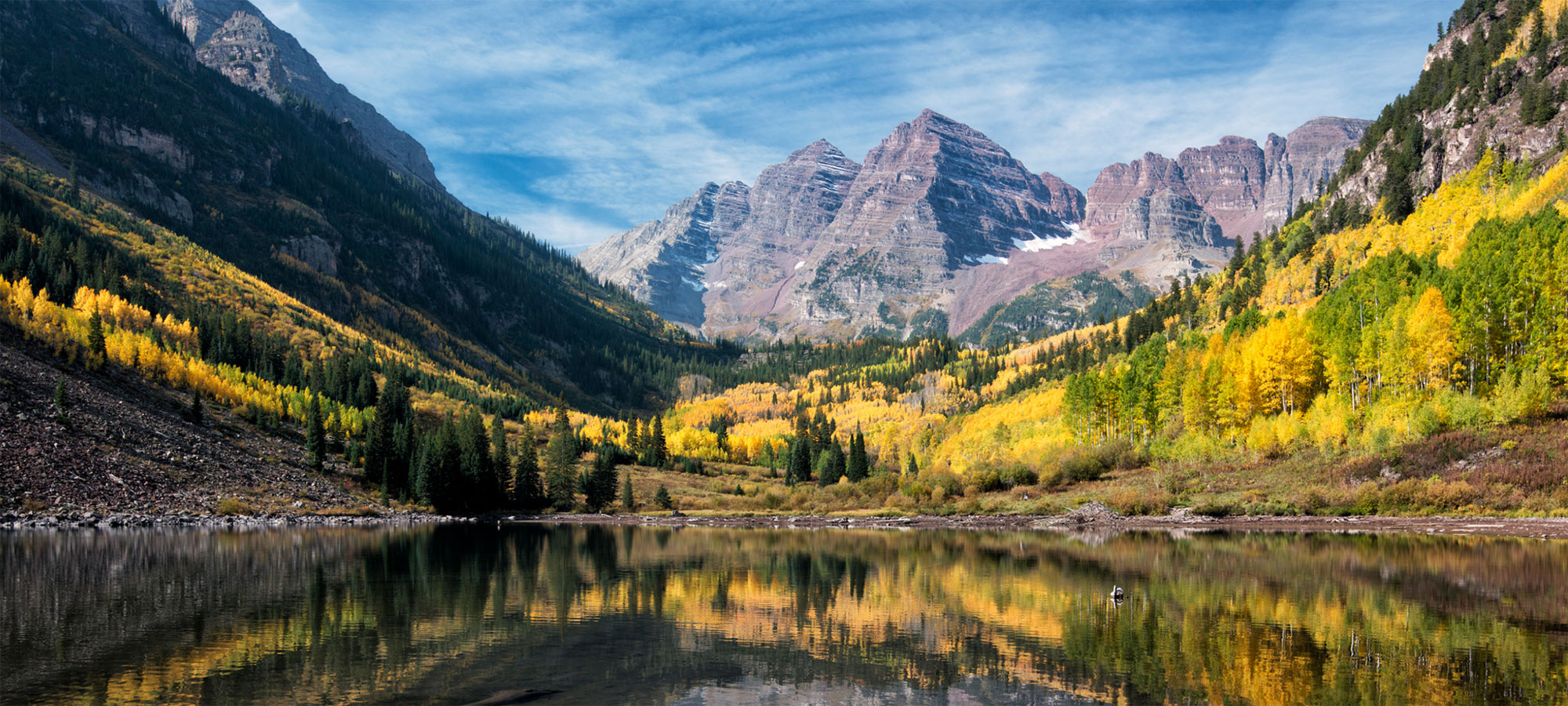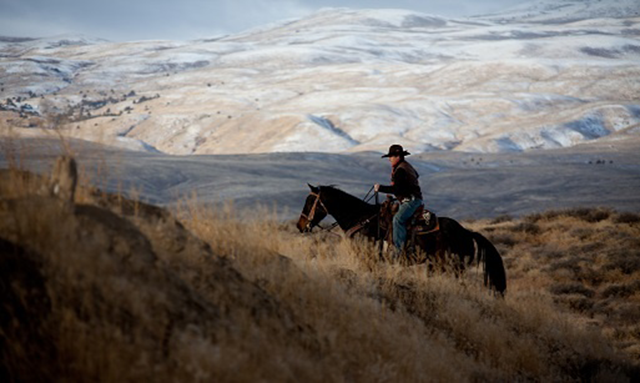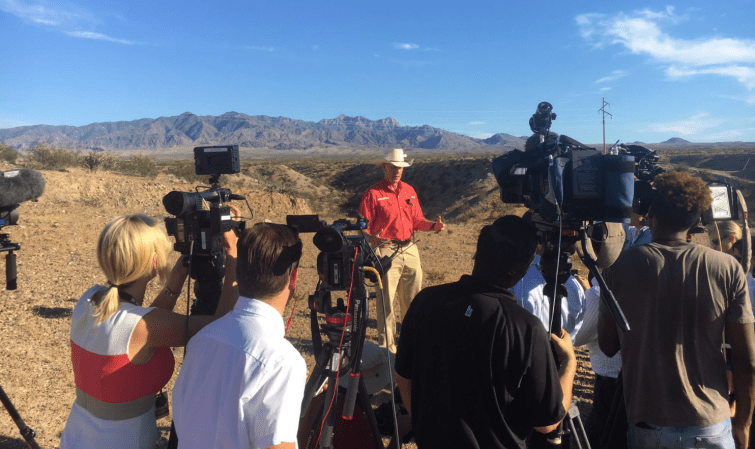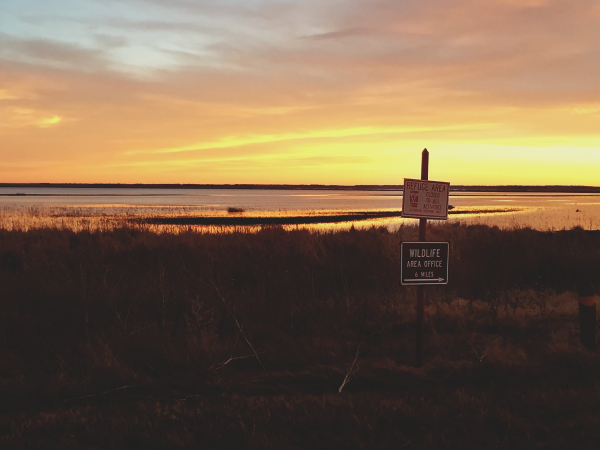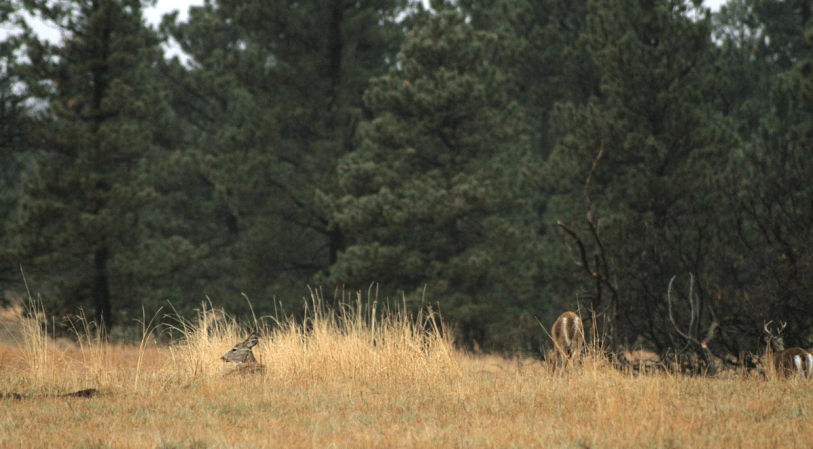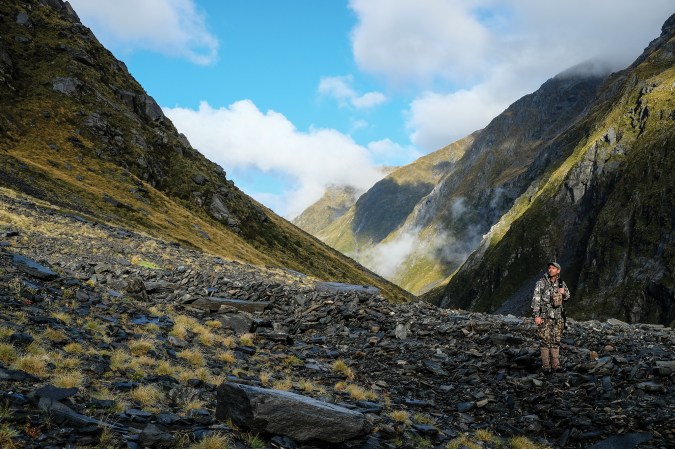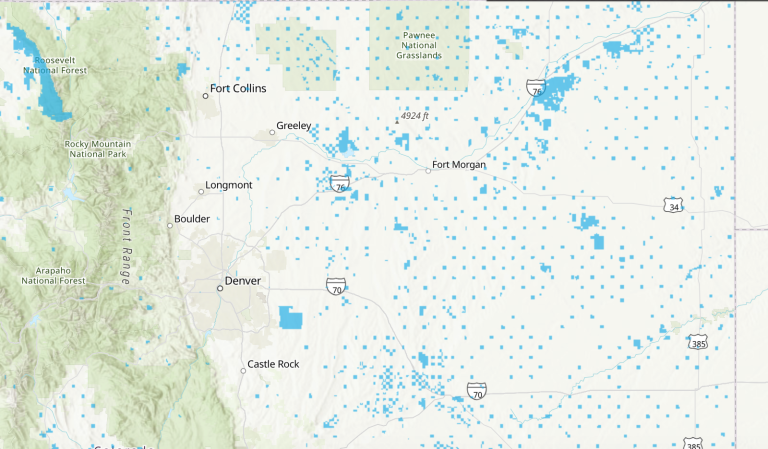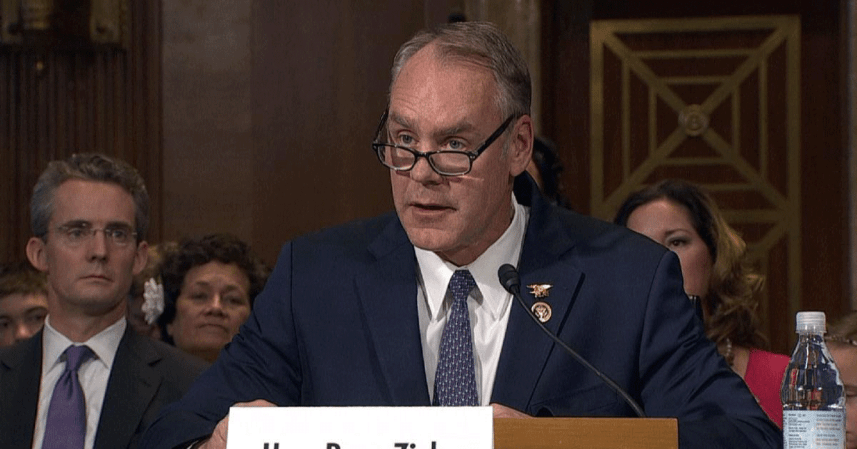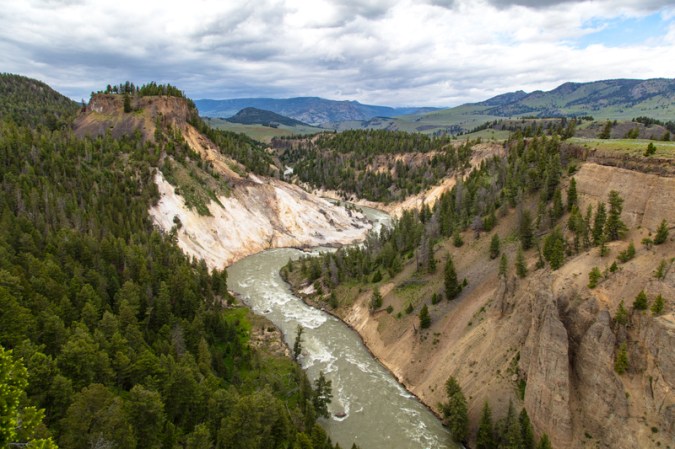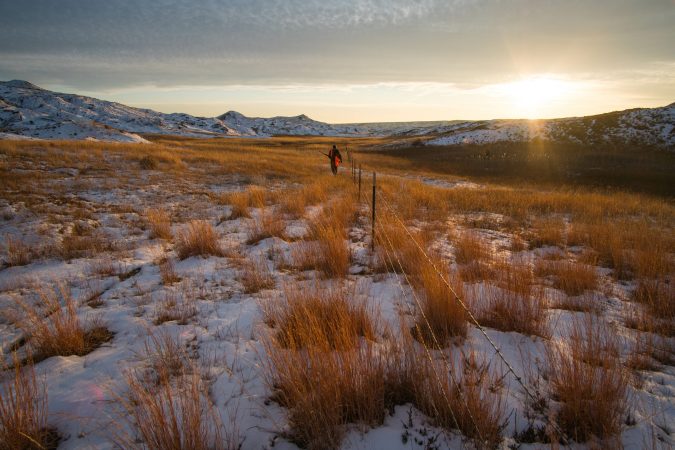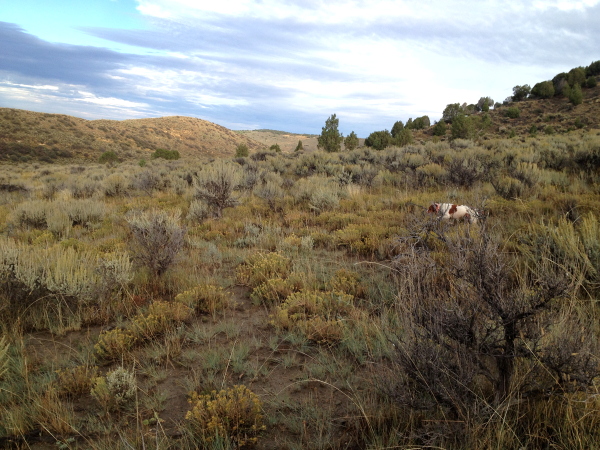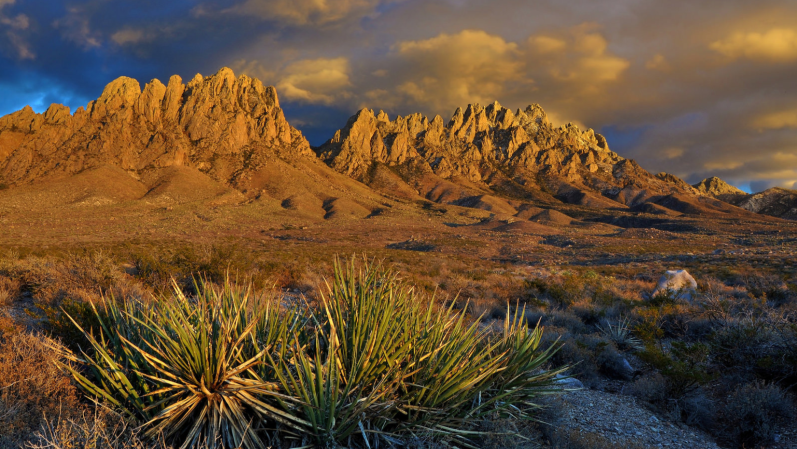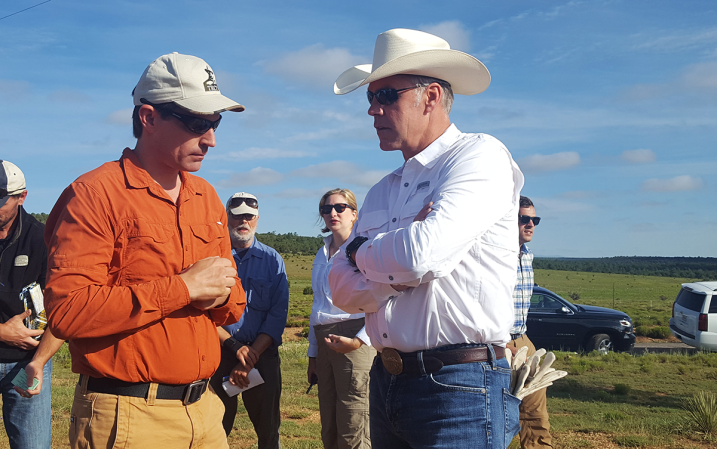Public outcry may have forced Rep. Jason Chaffetz (R-Utah) to withdraw his “Disposal of Excess Federal Lands Act,” but public-lands advocates must keep the pressure on Congress to defeat other transfer proposals still circulating on Capitol Hill.
Chaffetz’s HR 621 called for selling 3.3 million acres of land managed by the Bureau of Land Management (BLM) in 10 states. He submitted the bill on Jan. 24 and pulled it on Feb. 2 in the face of heated opposition from a coalescence of constituencies, ranging from hunters to the U.S. Humane Society.
The bill was an attempt to “grease the skids” and Chaffetz “got hammered for it,” said Sierra Club’s Western Public Lands Protection Campaign Director Matthew Kirby. “The lightbulb went off for a lot of people.”
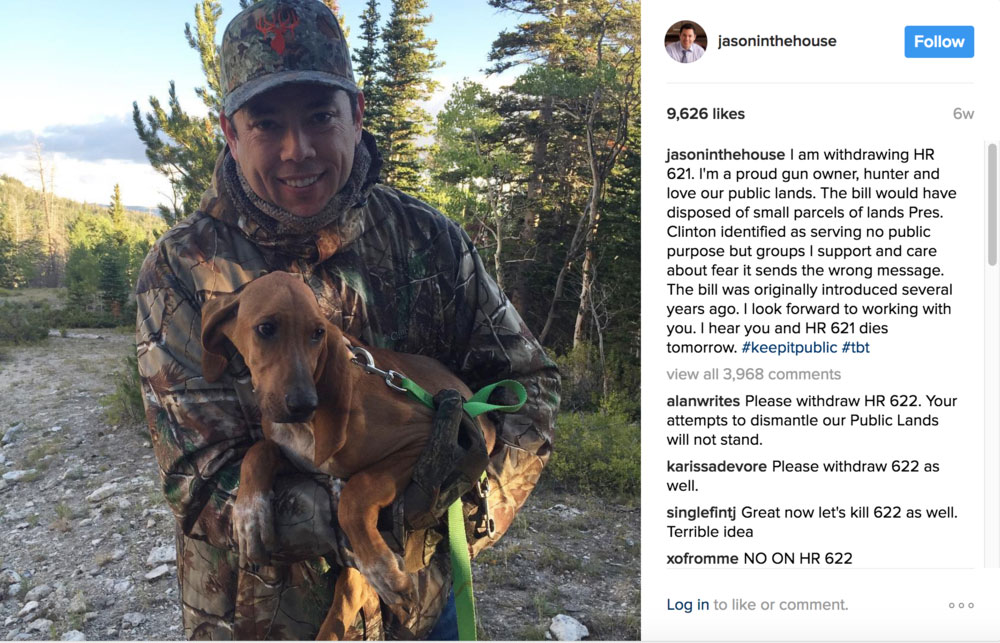
But the battle has just begun, Center for Western Priorities’ (CWP) Aaron Weiss warned, calling HR 621 a trial balloon, of sorts. Filing a proposal to “dispose” of millions of BLM acres to the highest “non-federal” bidder was “a good start” for transfer proponents who “are calling for much more than that.”
Between 2013 and 2016, at least 44 Republican-sponsored bills to dilute or delete federal regulatory control on public lands, as well as to divest-and-transfer federal lands to the states, have been introduced into Congress. At the 2016 GOP National Convention in Cleveland in July, Republicans included a provision in the RNC platform calling for the transfer of ownership of federal land to states.
Despite this, then-candidate Donald Trump said on the campaign trail that he opposed turning federal lands over to states. His son, Donald Trump, Jr., an avid outdoorsman and member of Backcountry Hunters & Anglers (BHA), reportedly convinced his father to select Montana Rep. Ryan Zinke, who opposes federal lands transfers, to be Secretary of the Interior.
Nevertheless, on the 115th Congress’s first day in session, the GOP-controlled House made 570 million of 640 million federally-administered acres essentially worthless by approving a “revenue neutral” resolution, which states “a conveyance of federal land to a state, local government, or tribal entity shall not be considered as providing new budget authority, decreasing revenues, increasing mandatory spending or increasing outlays.” Zinke, despite his stated opposition to federal lands transfers, voted in favor of the resolution.
On March 3, after being confirmed as Secretary of the Interior, Zinke told DOI employees at their Washington, D.C., headquarters that he would not sell off federal lands. “You can hear it from my lips: We will not sell or transfer public lands,” he said.
On that same day, however, Rep. Rob Bishop (R-Utah) — the longtime leader of the divesture movement and chairman of the House Natural Resources Committee — formally asked the Treasury Department to allocate $50 million “to account for the costs to transfer federal land to state or local governments.”
And so, the table is set with a confusing array of potential outcomes. More importantly, the legislative docket is crammed with divest-transfer bills. Among those now in committee: HR 622, to strip the BLM and Forest Service of law-enforcement authority; HR 232, to manage 2 million National Forest acres in Alaska solely for timber harvesting; S 273, to give states full authority over conservation plans to restore sage-grouse habitat. And just this week, the Senate endorsed a House resolution, approved Feb. 7 in a 234-186 vote, to discard the BLM’s 2.0 land-use planning rules.
Reportedly on tap: Initiatives to repeal the 1906 Antiquities Act, un-list the 29 national monuments created by the Obama Administration and dilute the Endangered Species Act (ESA).
In other words, the battle has only just begun. “The decision to pull HR 621 after a huge backlash is a strong reminder that our voices matter,” said Aaron Kindle, the National Wildlife Federation’s (NWF) Western Sportsmen’s Campaign Manager. “But this is far from the last battle we’ll see for our public lands.”
HR 621 was “a slap in the face” and public lands advocates should “take time to celebrate” its resounding smack-down, Backcountry Hunters & Anglers (BHA) President/CEO Land Tawney said before advising, “Stay vigilant. These attempts to sell our public lands will continue.”
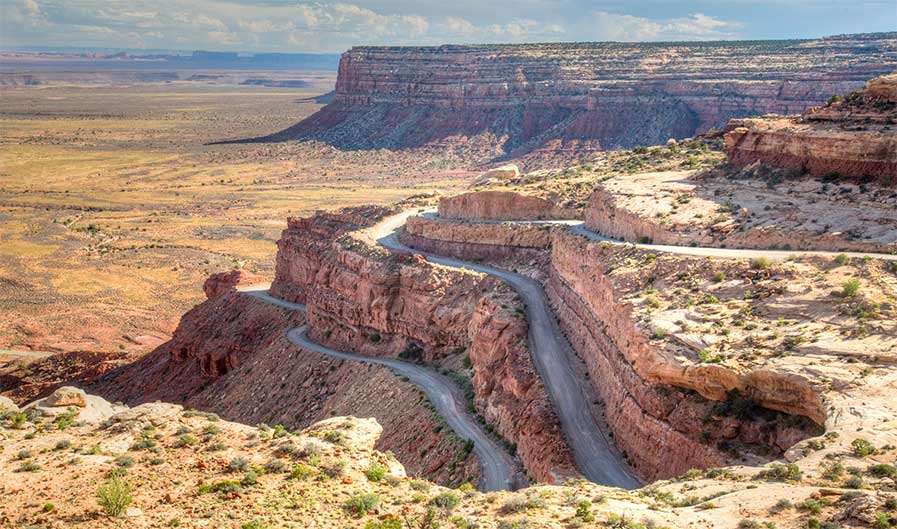
DEFINING THE BATTLE LINES
Federal land transfer proponents argue that state control of public lands would be less costly and more ecologically efficient than what they describe as disjointed, clumsy administration of public lands by domineering, distant multiple federal agencies that stymies beneficial development in layers of regulations and protracted permitting procedures without regard to local needs and concerns.
They say states would be more responsive and better suited to balancing the public interest in protecting endangered species, maintaining watersheds, managing habitat, and ensuring recreational access to public lands while also promoting oil and gas extraction, grazing and timber leases — among other commercial uses — where appropriate to generate jobs and tax revenues.
Among transfer proponents: The American Legislative Exchange Council (ALEC), American Lands Council (ALC), Americans For Prosperity, Environmental Policy Alliance, Western Energy Alliance, Center for Organizational Research and Education and, by resolution, as many as 10 Western state legislatures.
ALEC, in particular, has been a force in orchestrating the divest-and-transfer agenda. The Washington, D.C., free-market think-tank frequently drafts model legislation for conservative causes, as well as the cookie-cutter bill based on Utah’s seminal 2012 Land Transfer Act that has been introduced into at least seven Western state legislatures demanding control of federal land within their boundaries.
However, according to ALEC Director of International Relations and Federalism Karla Jones, the organization did not endorse Chaffetz’s HR 621. She said ALEC’s support for state sovereignty on federal lands does not mean it endorses “disposing” of federal land to the highest bidder.
“In principle, we would prefer to see the land conveyed to the states rather than have the same proceeds turned over to the state,” she said. “In general, ALEC would like to see control of the development turned over to states.”
But Jones and other transfer supporters do have a model policy they are showcasing in discussions with individual Congressional representatives, as well as in presentations before such pro-divesture ad hoc panels as the Federal Land Action Group, “a congressional team” founded by Reps. Chris Stewart (R-Utah) and Rob Bishop (R-Utah) to “develop a legislative framework for transferring public lands to local ownership and control.” That model is Canada’s “devolution” of federal “crown land” control to its territories.
Public-lands advocates who oppose the often shrewdly indiscernible glut of divest-and-transfer proposals vehemently dispute virtually every contention forwarded by ALEC and others. They maintain that states’ public-lands administration, by statute, emphasizes resource development as the top priority whereas federal agencies must adhere to a multi-use mandate that regards habitat conservation, wildlife stewardship, watershed integrity, historical preservation, and recreational access as primacies equal with oil and gas extraction, grazing, timber harvesting, and commercial privatization.
Even if federal agencies divested control, transfer opponents argue that states would still be required to comply with a complex and expensive matrix of federal environmental laws and inter-state water compacts, assuming financial burdens they do not have the resources to sustain without being forced to sell lands — like they already do.
Conversely, public lands advocates say, since states do not have to meet Freedom of Information Act transparency and disclosure requirements imposed on federal agencies, the public would not enjoy the same public input opportunities it now has in developing resource management plans for public lands. In other words, public access to public lands and public participation in public lands management would become … less public.
Particularly at risk: Hunters and the wildlife they pursue on public lands some transfer supporters, such as ALEC’s Jones, describe as “a vast expanse of vacant land” with little environmental value but significant mineral extraction potential.
Hundreds of organizations and businesses across the nation — including many that are long-time antagonists — have joined forces to lobbying against transfer proposals under the #KeepItPublic and #PublicLandsProud banners.
They include: The Theodore Roosevelt Conservation Partnership (TRCP), Rocky Mountain Elk Foundation (RMEF), the Sportsmen’s Alliance, Outdoor Industry Association (OIA), Outdoor Alliance, National Shooting Sports Foundation (NSSF), Backcountry Hunters & Anglers (BHA), Simms, Trout Unlimited, Quail Forever, Sitka, Old Milwaukee, the National Wildlife Federation, Kimber, Pheasants Forever, National Wild Turkey Federation, Remington, Powderhook, the Wilderness Society, Center for Western Priorities (CWP), National Bowhunters Association, and the Sierra Club, the nation’s largest grassroots conservation organization with more than 2 million members.
“People are starting to understand what it means to lose these public lands, so they are galvanizing in opposition,” NWF’s Kindle said, noting widespread opposition to HR 621 may have stunned divesture sponsors, but they remain “undeterred” from pursuing their agenda.
Defeating transfer proposals will require overt political pressure because those pushing behind-the-scenes for federal divestment will continue to push their agenda — “‘How can we take off a different bite?” with little public notice — until exposed and “publicly shamed” the way Chaffetz was, he said.
“We’re fed up being played the fool, of being told we don’t understand what is happening here when we understand exactly what is happening here,” Kindle said. “There are just so many good reasons to keep it like it is. Point-by-point, we win easily. We have won the argument so convincingly, that we are left to believe they have ulterior purposes that are not on the best interests of the public.”
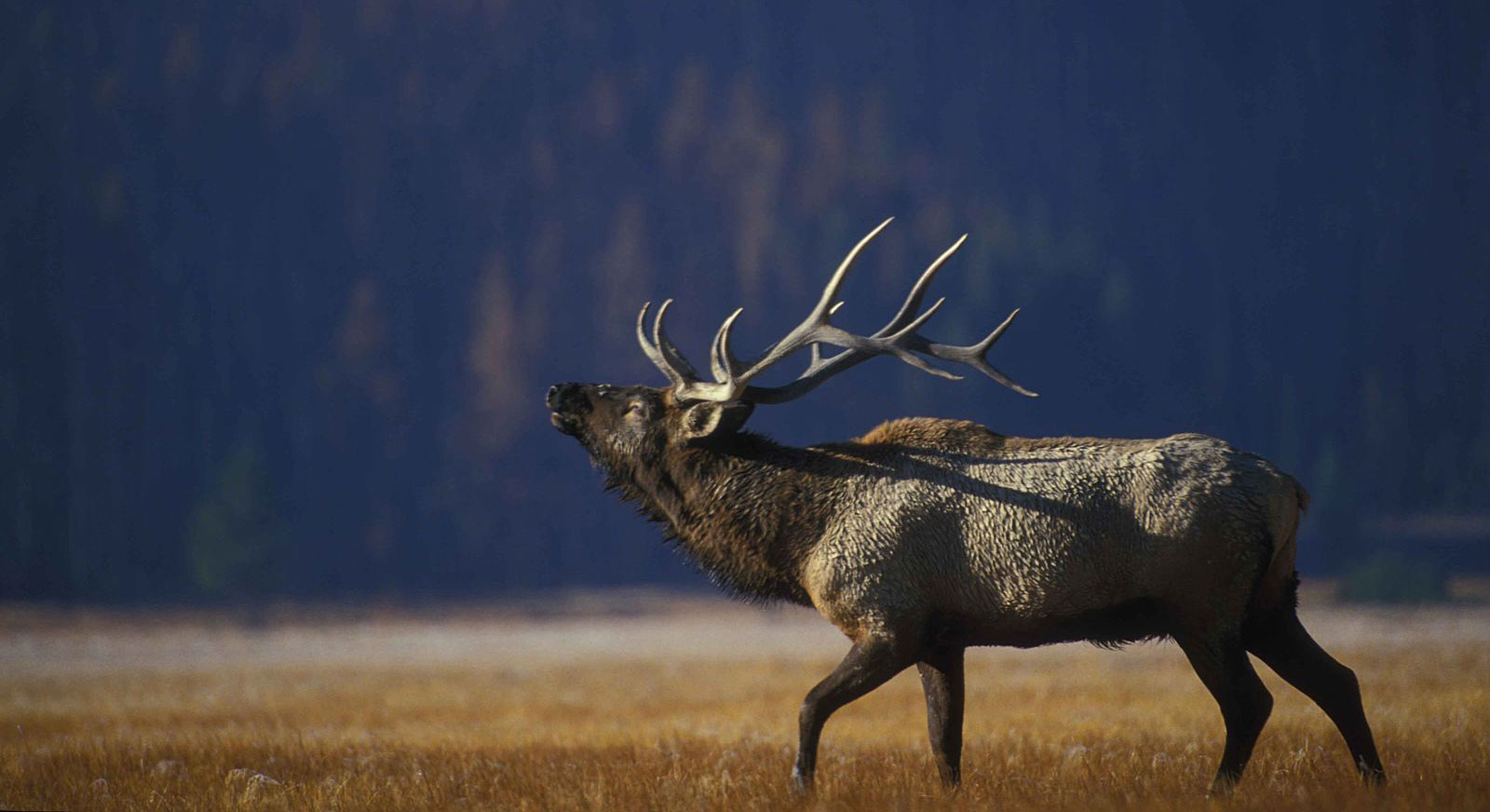
POINT-BY-POINT
Measuring the pros and cons of transferring federal lands to state control for this analysis will compare how the variation between federal and state land-use policies translate into economic sustainability, resource management, public access, and public input, as well as if adopting Canada’s “devolution” is a feasible option.
Management imperatives: States use trust lands to generate much-needed revenues to support public schools, roads, and social services, which provide a “public trust” incentive to develop them.
For instance, the Wyoming State Constitution requires state trust lands be managed for “long-term growth in value” and “optimum, sustainable revenue production.” The Utah School and Institutional Trust Lands Administration (SITLA) is statutorily obligated to manage lands in the most “prudent and profitable manner possible.” SITLA cannot consider multiple uses or “the public interest” unless its fiscal obligations to trust beneficiaries are met.
The impetus in federal land-use management is starkly different because U.S. government agencies, such as the BLM, Forest Service, Park Service and Fish & Wildlife Service — which administer 628 million acres, 93.5 percent of federal public land — must adhere to multiple-use and sustained yield (MUSY) standards.
The 1976 Federal Land Policy and Management Act requires federal land-use agencies “strike a balance among the many competing uses to which land can be put, including … recreation, range, timber, minerals, watershed, wildlife and fish, and (uses serving) natural scenic, scientific and historical values.”
To do so, the BLM and other agencies must develop resource management plans (RMPs) after extensive public input in guiding its management of public lands “in a manner that will protect the quality of scientific, scenic, historical, ecological, environmental, air and atmospheric, water resources, and archaeological values.”
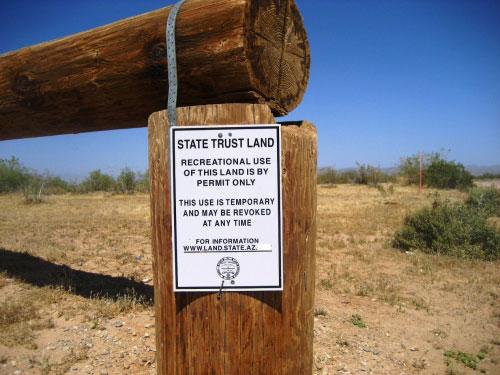
ALEC’s Jones said public lands advocates allege that “making money off the land” is the only reason to support state control. That is inaccurate, she said, but, “There’s nothing wrong with that. In fact, it’s already an important component of the federal multiple-use mandate. The federal government has a concept, but rarely manages to do it effectively. The states could do this better than the feds.”
That’s doubtful at best, said Matthew Kirby Sierra Club’s Western Public Lands Protection Campaign Director. State trust land must be managed for economic development, he said, meaning development, logging, mineral extraction are emphasized while public access and habitat integrity are diminished considerations. “By law,” he said, “their priority is mineral extraction.”
NWF’s Kindle said state land trusts must manage resources as “economic commodities that need to be developed,” noting Utah, for instance, has established statewide Energy Zones, Timber Agricultural Commodity Zones and Grazing Agricultural Commodity Zones on state trust lands that would be extended onto federal lands if transferred into their stewardship.
“The ‘North Star’ for us is, ‘best interest of the public,’” he said. “What the feds consider to be ‘best interest of the public’ is different than what states do.”
Economic sustainability: Transfer supporters point to financial analyses that, they say, confirm states could manage public lands for economic development as well as environmental conservation and, in doing so, ensure the sustained viability of habitats, wildlife populations and public access.
Among them: ‘Divided Lands: State vs. Federal Land Management in the West’ by the Property and Environmental Research Center (PERC) and a 2014 Congressional Research Service (CRS) report, ‘Federal Land Ownership Overview and Data,’ which claims Arizona, New Mexico, Montana and Idaho recouped $4.89 for each dollar it spent managing its public lands compared to 15 cents for each dollar spent by federal agencies on public lands in those states.
State and local governments are more innovative, accessible and responsive than federal agencies are, according to PERC, which maintains they are so hamstrung with bureaucratic inefficiencies, regulatory redundancies and protracted permitting processes that it almost impossible for them “to recognize opportunities where environmental and economic interests dovetail.”
American Lands Council CEO Jennifer Fielder, a Montana State Senator, said federal agencies do not have the financial incentive to manage lands for economic sustainability, which is why decisions regarding public land are best made by those living closest to public land because they are the most affected.
“The federal government has no accountability” for the way its land-use decisions affect the people who live nearby, she said. “We want to work with people to find a balance in accordance with the will of the people. Clean water, clean air, protect wildlife and provide outdoor recreation opportunities, jobs and economic development: We can have it all. Balance is possible.”
“We’re not looking to give industry a windfall,” Jones said. “We’re looking to put these lands into state trust — and state land trusts are not going to sell off the land to the highest bidder.”
But state have done just that — often and recently, said Center for Western Priorities’ (CWP) Aaron Weiss, noting the Oregon State Legislature in February agreed to sell the state’s oldest forest, the 82,500-acre Elliott State Forest, because its timber revenues had been flagging. The proposed $220.8 million deal would retain public access on 50 percent of the land and shield 25 percent of the acreage from logging.
“That’s the best they could come up with,” Weiss said. “They cannot afford to manage it for access.”
There’s a similar pattern on state lands nationwide, Kirby said. “Nevada has almost no state lands left. Utah continues to auction off parks,” he said, noting Colorado recently imposed strict restrictions on camping in state trust lands.
Indeed, Nevada has just 3,000 acres of state trust lands left from what was originally 2.7 million acres. Idaho has sold 41 percent of its state trust lands and only allows recreation on its remaining 2.4 million acres of trust lands if it doesn’t interfere with revenue-producing activities. In Colorado, only 18 percent of the 2.8 million acres of state lands are open to hunting and fishing. Utah will be auctioning off more than a dozen parcels of state lands — about 31,000 acres — in May.
“There is no evidence in history” to support any contention that the states would do a better job managing public lands than the federal government does, Kirby said, suggesting transfer proponents “have no interest in turning it into state public land.”
States “have a long history of selling public lands,” Kindle concurred. “We know they would sell them — and once that happens, those lands are forever gone.”
The reason why states would be forced to sell significant sprawls of federal lands within their jurisdiction is because they simply cannot afford to manage them to the standards federal law mandates.
As University of California-Davis law professor Charles F. Wilkinson documents in a white paper, The Public Trust Doctrine in Public Land Law, public land law is so heavily dominated by federal statutes that states could not manage these lands the same way they do their land trusts.
If federal lands are transferred, states would still have to comply with — among others — the National Environmental Policy Act, the National Historic Preservation Act and the Federal Land Policy and Management Act, and contend with many lawsuits challenging mineral development and other commercial uses on behalf of “scientific, scenic, historical, ecological, environmental, air and atmospheric, water resource, and archeological values.”
Even those who support retaining federal control of public lands can cite a laundry list of complaints and issues with government management policies and practices. But, they maintain, transfer supporters are wrong when they say public lands are a money pit for taxpayers under the federal government, noting the Department of the Interior (DOI) — the manager of the federal land-managers — used a its $12 billion budget in 2015 to generate a $358 billion contribution to the nation’s economy.
In addition to employing 70,000 people and organizing a volunteer force of 280,000 to manage public lands, transfer opponents say only the DOI has the combined resources to have the cohesive and comprehensive capacity to manage public lands in an economically sustainable, yet environmentally sensitive, manner.
Resource conservation: ALEC cites the 2014 CSR report that maintains 21 percent of federal grazing lands managed by the BLM are overgrazed. Jones said there is a “pattern of federal mismanagement” by a hodgepodge of agencies that allow forests to become fire hazards, degrade water quality, distresses environmentally sensitive habitat and inhibits cohesive economic development and emergency response coordination with state and local governments.
“The federal government doesn’t even manage the post office well, never mind” millions of acres of public land, said Mike Swenson, a former ALC lobbyist who now works with the Nevada Land Commission. “Frankly, they are the harm” that their policies are prioritized to prevent.
“Habitat management will always be the priority because it also makes financial sense. But how to you pay for it in five years, in 10 years?” Jones asked. “The fact is the states have environmental quality boards. Remember: They are the ones living there. They are saying they can come up with ways to make it more efficient. They are saying, ‘We could do a better job of it.’”
There is more flexibility and innovation in state land-use planning than with federal agencies, she said, noting state lands are leased “for everything from state parks to renewal energy.”
Federal bureaucrats have imposed so much red tape and administrative rules on public lands that the sheer bulk of these regulations paralyze the capacity to incorporate common sense into management policies, the ALC’s Fielder said.
“We have seen the pendulum swing from over-exploitation to underuse to a point where it is catastrophic,” she said.
To some extent, these complaints are understandable, notes Sportsmen’s Alliance Vice President of Communications and Marketing Brian Lynn. But, he said, transfer proposals aren’t really about best management practices for habitat and wildlife. After all, he said, federal managers must comply with state land-use laws, including hunting and fishing regulations.
“That’s already the model: The feds own it, the states manage it,” he said. “They can’t manage upkeep. States cannot afford to maintain trails or fight fires. States cannot afford to manage federal lands — they would have to develop them.”
Indeed, paying for wildfire protection alone — it accounts for about half of the U.S. Forest Service’s annual budget of $6.5 billion — would burden state taxpayers with a bill now shared nationwide, according to the Center for Western Priorities.
Habitat, wildlife and environmental conservation would not be a priority under state management. Among the wildlife that would be imperiled is the 80 percent of elk in the U.S. that depend on federal public land for at least part of their life cycle, according to the Rocky Mountain Elk Foundation (RMEF).
“This is dangerous for two reasons,” RMEF CEO David Allen said in a statement. “First, it could result in the privatizing of these lands and the subsequent permanent loss of public access for hunters, anglers, hikers and others. Second, this discussion is a smoke screen of sorts that does nothing to address the real issue of the crucial need for active management of our forests.”
Nor does transferring federal public lands to states address, perhaps, the West’s most critical resource. Water. According to the U.S. Bureau of Reclamation (BOR), which manages federal water projects, one in five western farmers relies on BOR water. The agency’s hydroelectric power stations generate 40 billion kilowatt-hours of electricity per year. Ten trillion gallons of BOR water is delivered to 31 million people annually. In addition, the BOR documents that it manages 289 recreation sites with 90 million annual visitors with an agency economic output is $46 billion a year, supporting over 300,000 jobs.
“Everybody wants to make this easy. It’s anything but. You don’t want too much federal control but the states cannot afford to manage it,” Lynn said. “Things have worked pretty well for a century.”
Public access: Transfer proponents dismiss claims that states would close access to public lands now open under federal management. But, in the end, all they really present is assurances without statutory proposals to affirm that conviction.
“It’s not as if hunters will say the federal government is doing a fantastic job,” Jones said. “I only need to restate existing and widespread complaints about the federal government restricting access to allay the worries of anglers and backpackers.”
Fielder, noting her husband is a retired wildlife biologist and she is “an outdoor recreation professional,” said most ALC members “are hunters and fishers and spend a lot of time in the wilderness.”
“We’re not talking about turning wildernesses into private corporate parks or selling public land to China,” Swenson said. “The federal government already privatizes a lot of federal land. We could craft language that would transfer land with strings attached, conditions that guarantee access, condition uses.”
If the federal government offered similar access and management assurances, he added, “I would be singing ‘Kumbaya’ with the Sierra Club and that is saying a lot because I am not a fan of the Sierra Club.”
Unfortunately, the Sierra Club is not a fan of assurances without statutory guarantees, Kirby said. For an example of what would happen if states assumed control of federal public lands, he noted that when Utah’s SITLA sold 391 acres of state trust land in October to Lyman Family Farms, Inc., for $500,000, the “first thing that the new owners did” was padlock a gate and post a “No Trespassing” sign on what had been the only public access to the southeastern part of the 1.3 million Bears Ears National Monument.
Hunters, in particular, fear the public lands that now hunt for free would either be sold to private interests who would charge for hunting leases, or for access, or “privatized” for the exclusive use of commercial outfitters.
“These groups are trying to convince people that they should voluntarily relinquish land that they currently own,” said the Wilderness Society’s Idaho Deputy Regional Director Brad Brooks. “The losers will be the public who are not affluent. The winners will be people and corporations who can afford to buy land.”
Public lands advocates say state control of federal lands would accelerate a land-use trend that is already surreptitiously restricting access to public land and waters.
With many large Western ranches being subdivided into ranchettes — say, 20-acre parcels — these private landowners are claiming their “amenity values” supersede “presumptive easements” that may have existed as public access to a national forest or BLM land for decades.
A recent example cited by Outdoor Life’s Ben Long includes a private landowner blocking a Gallatin National Forest easement into the Crazy Mountains northeast of Bozeman, Mont., essentially closing off public access to public lands’ habitat for bear, elk, mule deer and mountain goats.
Current federal policies that maximize access “has paid dividends time and time again — it’s a gift that keeps giving,” Kindle said, noting there is an intangible benefit to federal public lands that transcends dollars-and-cents analysis.
“The sense that America’s public lands are owned by all of us — owned just as much by a grandmother in Florida as by her grandchild in Alaska. Without access, a big part of our American way of life would be diminished,” he said. “The most basic expression of American pride and patriotism is the sense that these are out lands and we are going to protect them.”
Public input: Again, transfer supporters cannot make any guarantees that state stewardship of lands now under federal control would retain the opportunities the general public now has to participate in the decision-making process and influence management policy.
Public input on public land “is real important to us, to our family, to our constituents,” Fielder said, noting the federal government isn’t necessarily as transparent as public-lands advocates claim it is. “There are bills in Congress to auction federal lands and we can never tell what land” is being auctioned until the list is published in the Federal Register, she said. “We would never operate in this manner.”
“We need to have a discussion about what are the real challenges and what are the red herrings and not allow it to become a wedge issue” manipulated to make the “‘hook-and-bullet crowd’ fearful of the issue,” Swenson said.
If outdoors enthusiasts want to statutorily guarantee opportunities for public input, then demand states do so, Swenson said. “I am a sportsman. I hunt and fish. I care very much about public lands. I am concerned about the same issues,” he said. “Sit down with us and let’s craft language that is comfortable to all of us.”
Kindle said regardless what proponents say, states don’t have the same public comment and input requirements that federal agencies must adhere to. “There would be much less environmental review and much less public input,” he said. “There is a documented record and precedent of states developing land in a way that is incompatible with what citizens wanted.”
Right now, the multi-use mandate and public notice requirements for federal lands requires impacts be measured on “all uses,” including fishing, hunting, and other recreational activities, Kindle said. “The ability to get a permit for an oil lease is much quicker with the states than it is with the federal government.”
According to the BLM, 80 percent of its contacts and public commentary on land-use proposals are related to recreation.
The irony, said Director of TRCP’s Center for Western Lands Joel Webster, is in seeking state control of public lands because of a distant, implacable federal government, proponents are espousing “the very example of a top-down edict (they) are always criticizing.” If Congress rescinds the BLM’s 2.0 planning regulations and transfers public lands to states, “sportsmen will find themselves silenced when it comes to the future of these important lands,” he warned.
Canadian ‘devolution’: Jones said ALEC supports transferring federal public land to states similar to the way Canada ceded federal, or “crown lands,” to its Yukon Territory in 2003, North West Territory in 2014 and plans to do so in its Nunavut Territory within a few years. She discussed the process, “devolution,” during a February hearing before the Federal Lands Action Group.
“The territories increased the amount of public land,” she said, while fostering an “environmental and economic benefit” for all.
Untrue, BCHA’s Tawney said, claiming Canada’s “devolution” has more to do with developing its massive reserves of heavy bitumen mixed with sand — otherwise known as “oil sands” — which the government predicts will generate an estimated $218 billion over the next 25 years.
Devolution is all about “unfettered oil extraction on crown land,” he barked. “That is what happens when it is single-purpose management and the single purpose is to make money.”
Kirby dismissed Canada’s “devolution” example as relevant to the transfer issue. “The short answer to that is Canada is not the United States,” he said, noting that Canada’s land-management policies do not have the same access and multi-use mandates that American public lands must adhere to.
“It’s not an apples-to-apples comparison,” CWS’s Weiss concurred. “There’s nothing that makes them better” and Canada does not “have the same rules in management” priorities as the U.S. does.
“Are we in Canada or are we in America?” Tawney asked. “We are America. Let’s uphold the most truly American thing that we have: our public lands. Why are we looking elsewhere?”
Opening photo by John Fowler via Flickr
